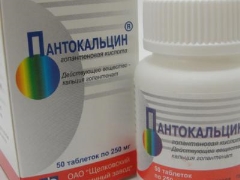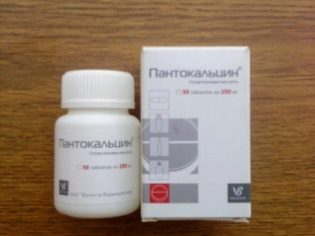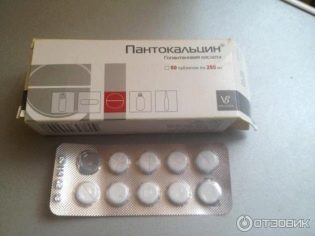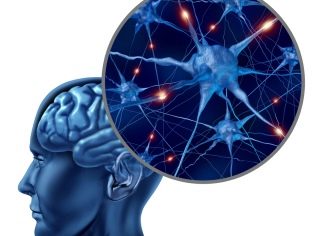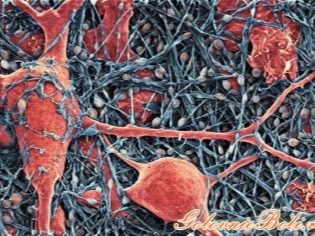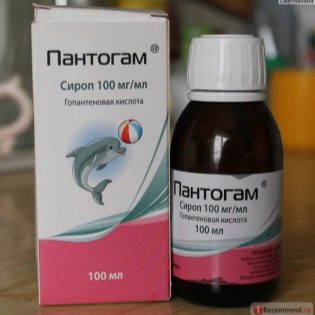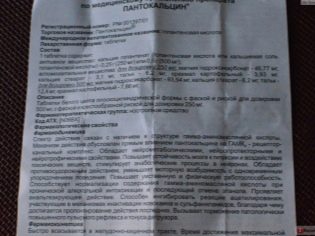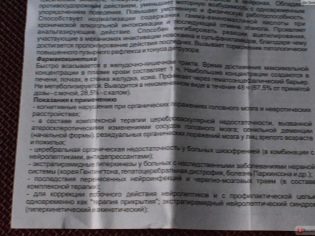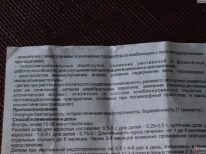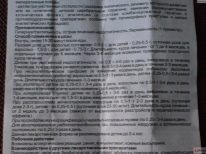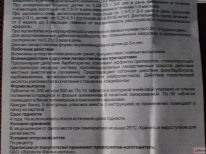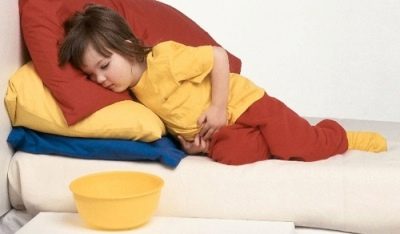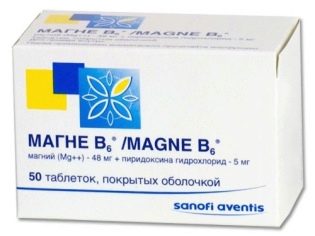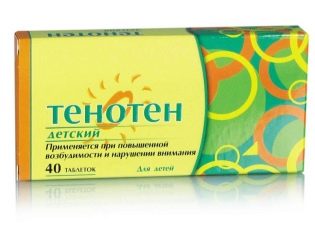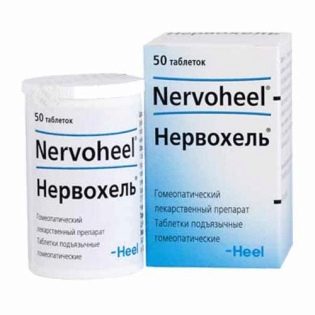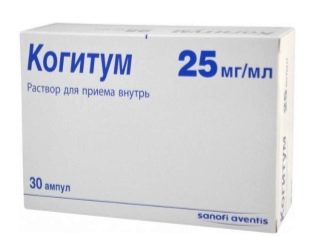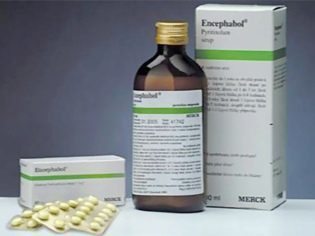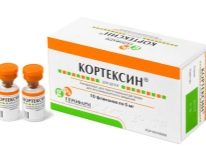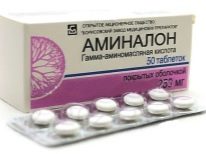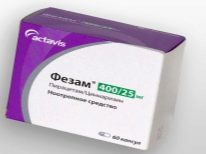Pantokalcin for children: instructions for use
Pantokalcin is a nootropic drug, often prescribed by adults for parkinsonism, head injuries, neurosis, tumors and other pathologies of the nervous system. Is it possible to give this medicine to children when it is used in children and in what doses?
Release form
The only form of Pantokalcin is tablets, in which the flat-cylindrical form and white color. They are sold in blisters of 10 pieces (a total of 50 tablets in a pack) or in jars of 50 pieces. Pantokalcin has no other dosage forms (syrup, suspension, injections, capsules).
Composition
The main ingredient of the drug, which ensures its effect on the tissues of the nervous system, is represented by hopantenic acid in the form calcium salt. Depending on the amount of such a substance, tablets are released in two dosages - 250 mg and 500 mg. Potato starch and calcium stearate, as well as talc and magnesium hydroxycarbonate are added to the density and maintain the shape of the drug.
Operating principle
Pantokalcin has a direct effect on brain tissue, since hopantenic acid has GABA, an important neurotransmitter, in its structure. The drug has a neuroprotective effect, which is to increase the resistance of neurons to the effects of oxygen deficiency or harmful substances.
The drug also has neurometabolic and neurotrophic properties, that is, improves metabolic processes in brain cells and increases their efficiency. Pantokalcin has both an anticonvulsant effect, and the ability to inhibit the increased cystic reflex.
Indications
The drug is prescribed for such diseases and disorders of the nervous system:
- Cerebral palsy.
- Transferred neuroinfection.
- Epilepsy.
- Lag in the development of speech, psyche or motor skills.
- Neurosis.
- Traumatic brain injury.
- Stuttering.
- Extrapyramidal syndrome.
- Schizophrenia.
- Enuresis and other problems with urination of a neurological nature.
- Reduced physical or mental performance.
- Violations of memorization.
- Strong emotional and mental stress.
- Problems concentrating.
From what age is prescribed?
In the annotation to Pantokalcin, it is noted that such tablets are not used in the treatment of children under 3 years of age. This is due to the difficulties of small children to swallow solid medicine. If treatment is required for a patient in the first years of life, this medicine is replaced by an analogue called «Pantogam», as one of its forms is a syrup, approved for the treatment of children from birth.
However, some doctors still prescribe Pantokalcin to children under three years of age, recommending that the tablet be crushed before it is given to the powder.
Contraindications
Pantocalcin is not given if the child has:
- There is intolerance to hopantenic acid or any of the auxiliary components of the tablets.
- A severe pathology of the kidneys has developed, which has led to renal failure.
Side effects
A child receiving Pantokalcin may experience an allergic reaction to such tablets in the form of skin rash, dermatitis, rhinitis, conjunctivitis or other manifestations of allergies. If such symptoms are detected, treatment should be stopped immediately and consult a doctor to select another therapy.
The nervous system of some young patients respond to Pantokalcin with symptoms such as excitement, insomnia or headaches. Other children, on the contrary, feel during treatment. lethargy, lethargy, drowsiness, dizziness. Such negative reactions usually disappear if the dosage of the drug is reduced.
Using
Instructions for use recommends drinking Pantokalcin after a meal in the morning or afternoon. The optimal period for taking pills is 15-30 minutes after lunch or breakfast. Take the medication in the evening (later 17:00) is not worth it, as this may affect night sleep. The tablet should be swallowed whole, but if there are difficulties with it, it is permissible to grind it into powder and give it to the child in this form, and then suggest to drink it with water.
The dosage and duration of treatment Pantokaltsinom in children is determined on the basis of the diagnosis. Usually the drug is given 1 tablet at the reception (The dose may be 0.25 g and 0.5 g), and the average duration of the course is 30-60 days, but if necessary, it can be extended up to 4-6 months or even a year. The daily dose of medication varies from 750 mg (three tablets of 250 mg) to 3000 mg (six tablets of 500 mg).
For example, if a child has a delayed speech development, the drug is prescribed for 2-3 months, 500 mg per dose three times or four times a day. With asthenia or increased loads, the drug is given in 0.25 g three times a day for a month. In the same dose and as often the drug is taken to eliminate the effects of brain injury or infection. If a small patient has epilepsy, the medicine is used in 250-500 mg 3-4 times a day for 6 months.
In the dose prescribed by the doctor, Pantokalcin is not given immediately. During the first week of use or a little longer (if the course is long) it is gradually increased and monitored the patient's response.
Discontinuation of the drug should not be abrupt either - 7–8 days before the end of the course, the dosage starts to be lowered until it is completely stopped.
Overdose
The consequences of an overdose of Pantocalcin are usually negative symptoms of the central nervous system, which occur among the side effects of tablets. In case of overdose, wash the baby's stomach, and then give the absorbent drug.
Interaction with other drugs:
The manufacturer informs:
- Pantokalcin is able to enhance the action of agents that stimulate the nervous system, so the prescription of tablets along with such drugs or other nootropics should be under the supervision of a physician.
- Pantocalcin is often prescribed with "Tenoten"," Magne B6 "," Nervohel "and other drugs acting on the central nervous system, but such combinations should not be given without a doctor's appointment.
- With simultaneous use with barbiturates or anticonvulsants Pantokalcin increases their effectiveness and reduces the risk of side effects.
- Treatment with Pantokaltsinom helps prevent the harmful effects of neuroleptics or eliminate the negative effects after treatment with such drugs.
- If you give Pantokalcin together with Glycinethen the effect of the medicine will be more pronounced.
- Under the influence of hopantenic acid, the therapeutic effect of local anesthetics is enhanced.
Terms of sale and storage
To buy Pantokalcin in a pharmacy, you need a prescription from a doctor. The average price of 50 tablets of 250 mg is 400-450 rubles, and the packaging of a medicine with a higher dosage is about 700 rubles. Store the drug at home is necessary at temperatures up to +25 degrees Celsius. Storage should be dry and inaccessible to small children. Shelf life of tablets - 4 years.
Reviews
Reviews of neurologists and pediatricians on the use of Pantokalcin in children are mostly positive.This tool is widely used in pediatrics like preschoolers and school-age children, noting that the drug helps to accelerate development, absorb the material, acquire new skills, improve sleep. According to the doctors, the use of pills effectively eliminates anxiety, hysteria, frequent waking at night and other negative symptoms.
Most of the reviews about Pantokalcin by the parents are also positive. In them means called effective and emphasize that after the course of treatment, the child began to speak in long sentences, got tired less at school, expanded vocabulary, and so on.
However, there are also negative reviews, in which they complain about side effects (for example, on a restless or inhibited state) or the absence of the expected effect.
We also note that some doctors, among whom is the popular pediatrician Komarovsky, consider Pantokalcin and other medicines-nootropics drugs whose benefits are not proven. In their opinion, at least they do not cause any harm to the child’s body, but the effectiveness of such medicines is low, so their use in case of RFR, enuresis, ticks and other serious problems is inappropriate.
Analogs
As mentioned above, the analogue of Pantokalcin for the active substance is "Pantogam". This medicine is produced not only in pill form, but also in the form of a sweet syrup, which allows it to be given to children under three years of age.
Indications, possible negative effects and even dosages for such drugs are the same.
In addition, if necessary, replace the doctor Pantokaltsin may recommend another nootropic, for example:
- Suspension "Encephabol"which is prescribed for encephalopathy, developmental delay, intracranial injuries and other pathologies from birth (from the third day of life). The drug is also available in tablets approved from 7 years.
- Pills "Glycine"That can be given to children of any age. They are in demand to improve memory, stimulate mental activity, normalize sleep rhythm, protect the brain from stress.
- Solution "Kogitum, Which has a pleasant banana flavor. This drug, acetylamino-succinic acid, is used in patients with ZRR, head injuries, neurosis, and other pathologies in children over seven years old (sometimes prescribed for younger patients).
- Ampoules "Cortexin", The contents of which are administered intramuscularly to children of any age. Such injections are prescribed even for premature babies, if they have a birth trauma, encephalopathy or other CNS pathology.
- Pills "Aminalon"Containing GABA and allowed for children older than a year. They are used in the treatment of cerebral palsy, traumatic and other brain damage.
- Capsules "Fezam", the composition of which includes just two components to improve the brain - cinnarizine and piracetam. They are used for asthenia, memory disorders, motion sickness and other problems from the age of five.
